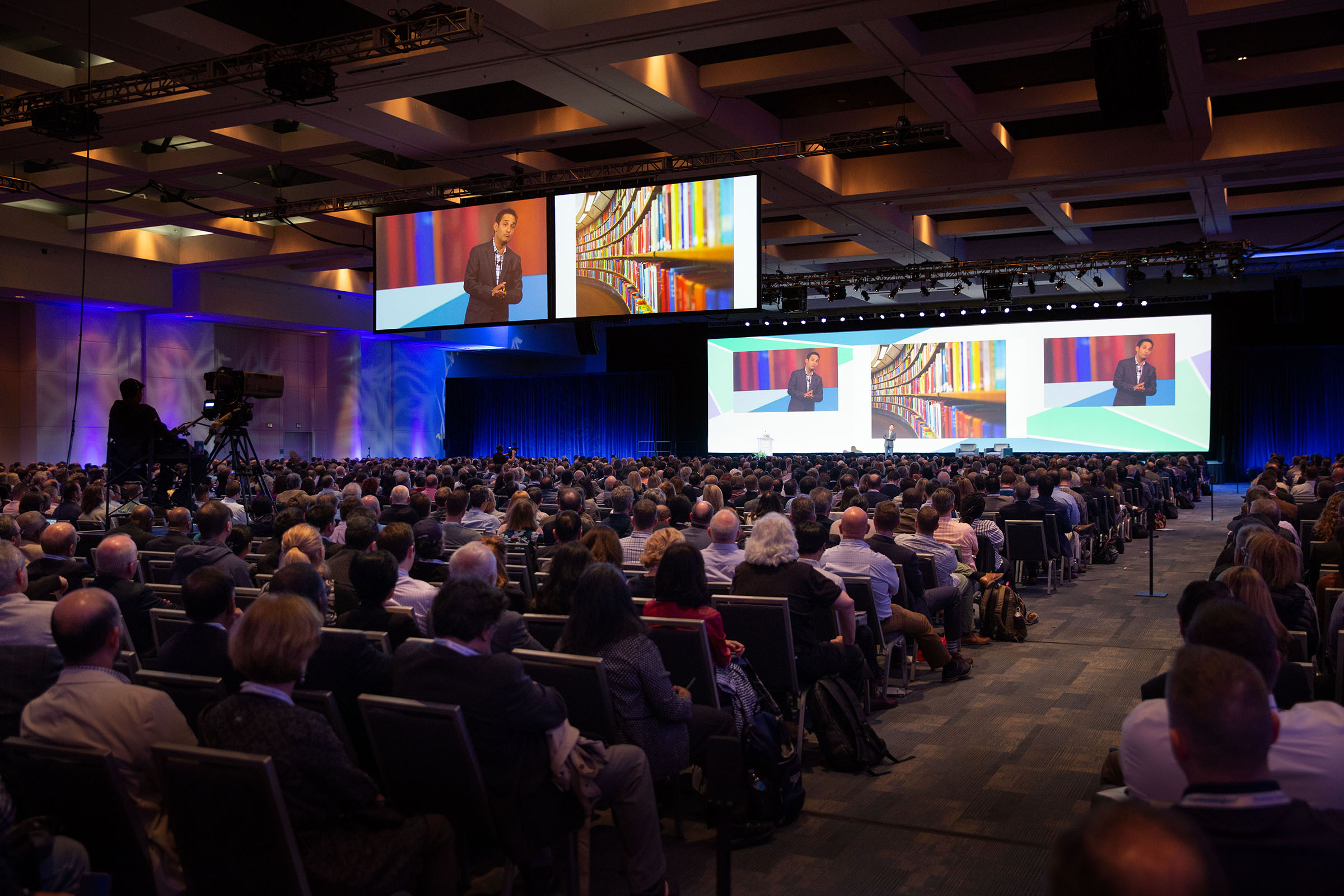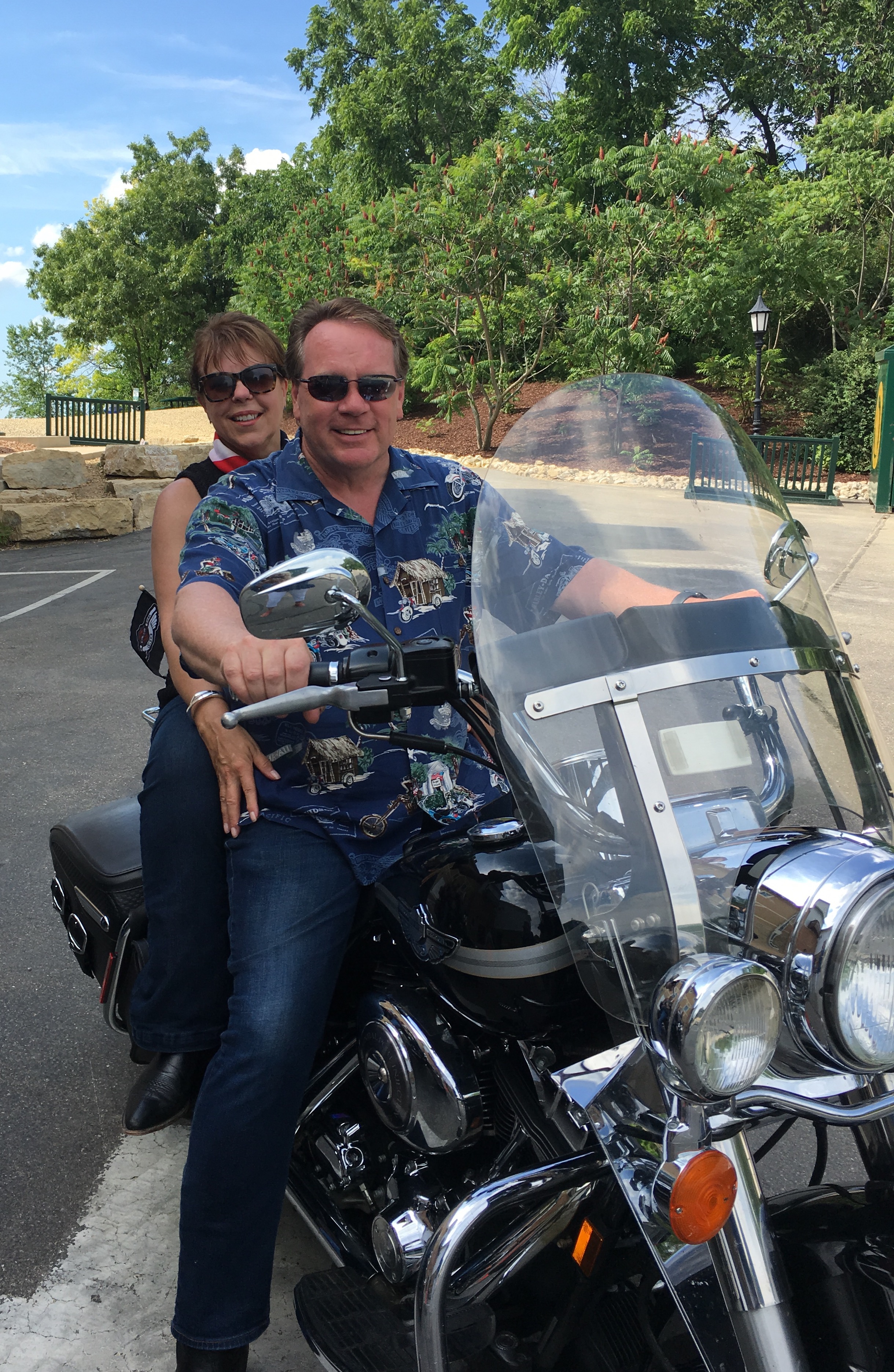In May, Professional Convention Management Association’s Foundation honored nine business-event professionals for their innovation, dedication, and passion at its 2019 Visionary Awards in Washington, D.C., before a crowd of more than 1,000 people. One of three lifetime-achievement award recipients was Chris Wehking, CMP, chief program officer for the American Society of Anesthesiologists in Chicago, who was recognized for his consistently effective approach to business-event strategy.
After 19 years at the American Hardware Manufacturers Association, Wehking came into the medical niche in 2006, directing the scientific meetings and exhibits for the American Society of Plastic Surgeons until 2010, then joining ASA to do the same. But these past nine years at ASA have been among the most challenging of his 32-year career, given the changes to the healthcare industry in the United States. Wehking has risen to the challenge, though: With responsibility for 75 meetings each year, including an annual meeting of more than 15,000 attendees and exhibitors, Wehking has helped double ASA’s total meeting attendance and its membership by referrals since his arrival.
MeetingsNet caught up with Wehking in early July, just before he and his wife Shirley left for vacation in Alaska, to discuss what ASA is dealing with in today’s events landscape and what he sees across the wider medical-events niche.
MeetingsNet: In your time at ASA, what has been the most successful change you’ve worked on for ASA’s in-person events?
Wehking: Establishing better global relations for the association’s long-term benefit. Specifically, internationalizing the annual meeting and doubling international physician attendance. The larger goal around that is to grow the overall interest in ASA and become a more significant contributor to the world of anesthesiology: a leader in patient safety and care as well as an educator, business collaborator, and humanitarian organization. ASA has established collaborative relationships and educational offerings with at least 15 anesthesiology societies internationally and is the largest supporter of global humanitarian and training programs worldwide.
MeetingsNet: What’s the next event-related initiative you and the ASA executive team are implementing?
Wehking: ASA has good relations with its corporate partners and exhibitors, but continues to devote time and resources to fostering stronger partnerships in the fast-changing healthcare environment. With the significant consolidation in healthcare systems and the rise of nationwide corporate practices has come dramatic changes in pharma and medical-device purchasing influence and authority. We have been working hard to research, educate, and support our specialty and our corporate partners to keep up with these changes. In particular, education on leadership and other business training at our larger meetings and in customized settings like the ASA Conference Center or our corporate-partner headquarters has become a focus; it’s one our most important business-event strategies.
MeetingsNet: What are the biggest challenges for medical association events these days?
Wehking: First, maintaining corporate and exhibitor partnerships and delivering on their ROE as this marketplace consolidates and changes. Second, attendees have limited time and resources to participate in face-to-face meetings—especially events like our annual that extend beyond the weekend. Their conference-travel budgets are tight, but the bigger challenge is HCPs’ workloads and their limited time to get away; we have to make the most of their time and also persuade them that the event is worth their time.
 MeetingsNet: Is the desire for more online education strong enough to possibly undercut in-person events?
MeetingsNet: Is the desire for more online education strong enough to possibly undercut in-person events?
Wehking: ASA has increased its online education as well as its simulation products and offerings. But our face-to-face meetings (2019 annual meeting pictured here) remain important and desirable for members who can get away for networking, information sharing, hands-on training, and to experience the latest in pharmaceutical, medical-device technology, and business services on display at our meetings throughout the year.
MeetingsNet: Is ASA recording many of its in-person sessions for on-demand watching, and does that bring good incremental revenue?
Wehking: It does in our case, and as importantly, it also responds to our members’ inability to attend all of their desired sessions at our large meetings. What’s more, we have found that these online offerings and products serve to highlight the quality of education being missed by not attending the in-person events, let alone all the networking and social elements that being there offers.
MeetingsNet: What does the ongoing consolidation of smaller HCP practices into larger organizations mean for the future of medical conference attendance?
Wehking: It has had and will continue to impact medical society meetings, as many of these larger corporate practices initially chose to provide their own education and training programs. But with a concerted effort and commitment to building strong relations and demonstrate value to these businesses, medical societies like ours can manage the impact on their meetings and, where possible, partner in a way that benefits the society, each of those practices, and the members most of all.
MeetingsNet: Obviously, poster sessions are very popular at medical events. Do you think they will remain in use over the long term, and are they morphing in any way to maintain their effectiveness?
Wehking: Research is an essential element of any medical specialty, and researchers and the academic community crave the opportunity to present their work and receive feedback and recognition from their colleagues and peers. So I think that research and abstract presentations will always be a key element to most medical meetings. As for what form of delivery they might take, I do see ePoster usage continuing to evolve with technology and attracting more interest. But the traditional paper and cloth posters will stick around within most societies for a long time, I think.
 MeetingsNet: Aside from taking vacation in Alaska, how do you relax and enjoy yourself outside of work?
MeetingsNet: Aside from taking vacation in Alaska, how do you relax and enjoy yourself outside of work?
Wehking: Because of my heavy travel schedule, I most often find peace and relaxation at home with my bride Shirley (pictured here) and with family and friends. I play golf occasionally, and long rides on my Harley help too.





